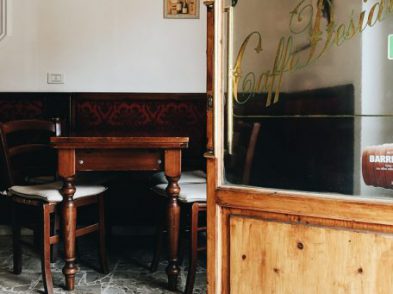‘Arethusa rose from her couch of snows in the Acroceraunian mountains,’ recites Audrey Hepburn as Princess Ann in the 1953 film, Roman Holiday. She quotes it as her favourite Keats poem, but the dashing Joe Bradley (played by Gregory Peck) corrects her with, ‘Shelley.’ But the Princess adamantly insists it is Keats. Mr. Bradley is right, and he should know too, since he lives on via Margutta, around the corner from the Keats-Shelley Memorial House in piazza di Spagna, Rome (www.keats-shelley-house.org), a memorial and library to the two most celebrated English Romantic poets, John Keats (1795-1821) and Percy Bysshe Shelley (1792-1822), who both lived and died in Italy before either of them reached 30 years of age. It was because of Italy’s popularity with young English poets such as Keats, Shelley, and Lord Byron, that it came to be known as the ‘Paradise of the Exiles.’ Sunnier, cheaper, and more full of art and culture than their homeland, it was the perfect destination for these bohemians.
While Keats lived in Rome, Byron lived in Pisa and Venice (dismissing Florence because he believed it to be full of ‘gossip-loving’ English people), and Shelley and his wife, Mary, lived in Florence and Pisa. The Shelleys came, like many, seeking health and sun, and found life, colour, and warmth awaiting them in Italy. Shelley’s letters home are filled with paintings, churches, the sun and the sky. They were only a young couple when they arrived in 1818, Shelley just 26 years old and Mary only 21. For six months in 1819 they lived in Florence on via Valfonda in a palazzo with a 16th century garden, where their son, Percy Florence Shelley (named after their beloved city, of course) was born. Shelley used to go often to the Cascine Park, where he conceived his poem, ‘Ode to the West Wind.’
The Shelleys spent quite some time also living in Pisa, where they moved to a house on the Lungarno in 1820. It was in Pisa that the young Mary Shelley wrote her most famous novel, Frankenstein. The Palazzo dell’Orologio in Pisa’s piazza dei Cavalieri was a source of inspiration for Shelley’s Tower of Famine. Aside from the creepy black iron baskets on either end of the palazzo, which were used for holding the freshly chopped-off heads of unfortunate criminals, the tower of the palazzo was also the place where in 1208 Ugolino della Gherardesca, together with his sons and grandsons, was starved to death for treason, a shady incident also immortalised by Dante in his Inferno.
Shelley’s friend and fellow poet, Keats, lived in Rome after having been ordered by his doctors to escape the English winter and move to Italy. He lived at No. 26, piazza di Spagna, the pink house by the Spanish steps, now the memorial to the two poets. Here, Keats watched the colour and life in the piazza below, and here he died from tuberculosis at only 25 years of age. He is buried in the Protestant cemetery in Rome. At his death, Shelley said of Keats’ burial place and adopted city, ‘it might make one in love with death, to think that one should be buried in so sweet a place.’
Shelley ended up right next to Keats the following year. In a mysterious and tragic accident, Shelley’s unrecognisable, fish-eaten body was found off the coast of Livorno after his unseaworthy boat, the ‘Don Juan’ (named after Byron’s satirical masterpiece), was caught in a violent storm. A copy of Keats’ poetry, Endymion, was found in his pocket, one of the clues enabling them to identify the corpse. Shelley’s body was ceremoniously cremated on the beach of Viareggio by his friends, Byron and Leigh Hunt, who doused him in more wine than he could have drunk. According to the legend, Hunt reached into the burning pit and took out Shelley’s heart for Mary, who carried it in a silk shroud wherever she went. The rest of his remains were buried with Keats in Rome.
On his last home in the bay of Lerici, just north of Pisa, there is a plaque in Italian describing the tragic end of the young poet, which reads: ‘Upon this terrace, once protected by the shadow of an ancient oak-tree, Mary Shelley and Jane Williams awaited with weeping anxiety the return of Percy Bysshe Shelley who, sailing from Livorno in his fragile craft, had come to shore by sudden chance among the silences of the Elysian Isles – O blessed shores, where Love, Liberty and Dreams have no chains.’
Next issue:
D.H. Lawrence in Florence








